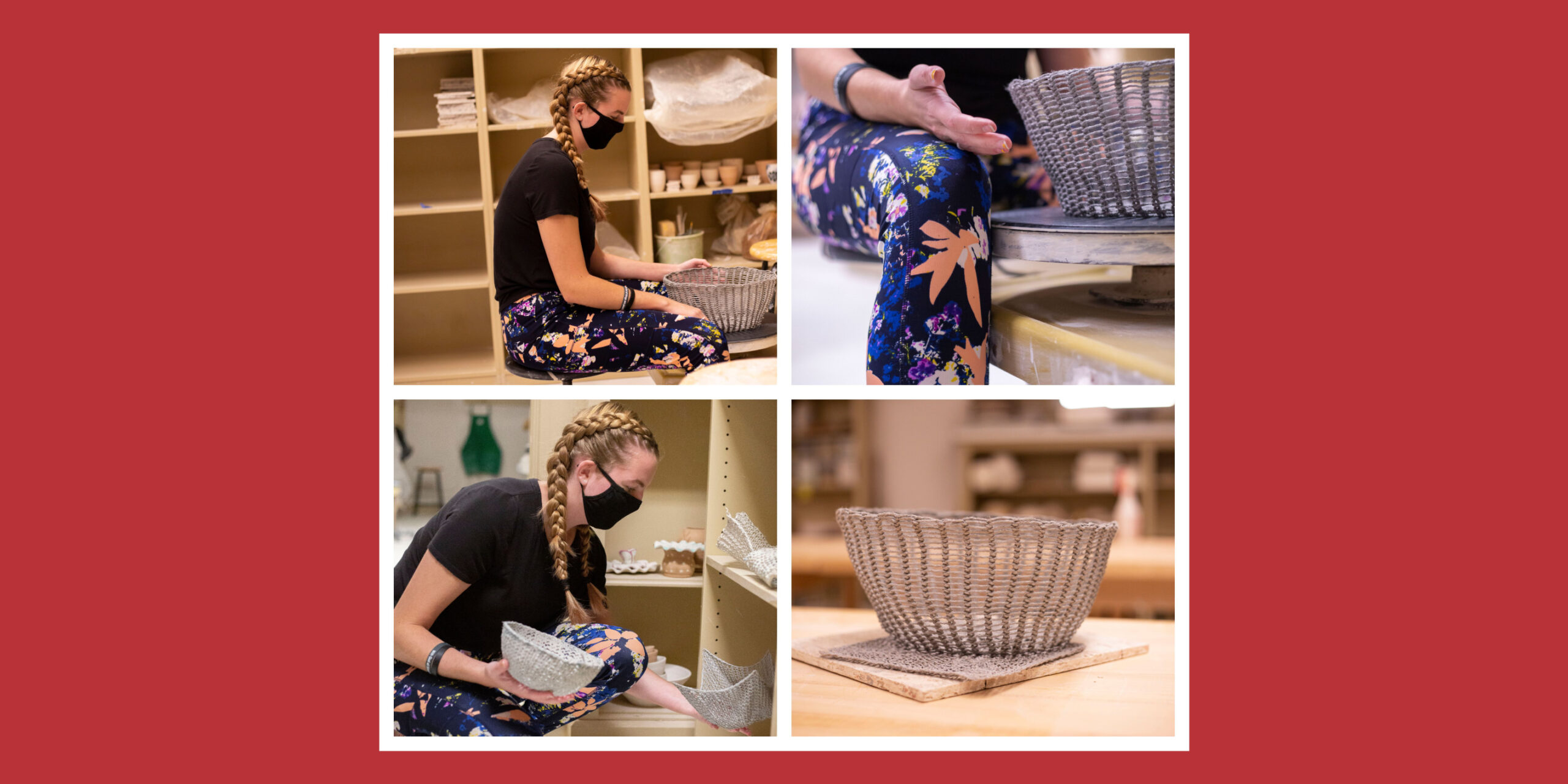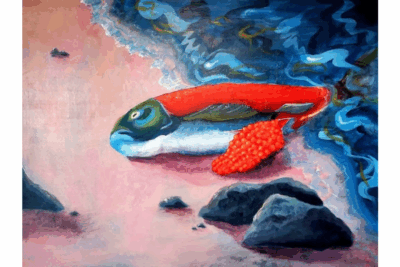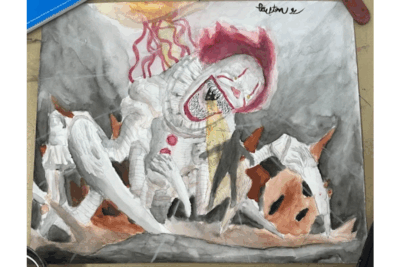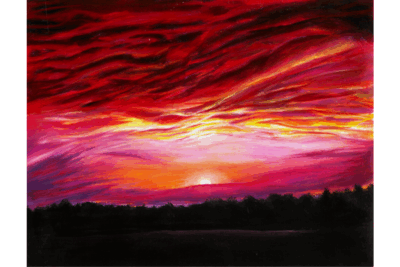Photos by Alex Koscher
When Laura Olsen, junior sign language interpreting major, enters the ceramics studio, she never actually sits at the wheel.While taking Ceramics I as a first-year, Olsen was given the assignment to come up with how to do a different type of ceramic. She had also recently learned to knit and so came up with the whimsical idea of combining the two mediums, a technique that she calls, “pottery of the scarves.”
Here [top left] she sits with a piece that is mid-way through the process, but for Laura, each piece starts with a regular piece of knitting.
To be able to form the knitted piece into shapes such as this one, first Laura soaks the knitting in slip overnight. Slip is a mixture of clay and water that is typically used in ceramics for glue-like purpose or decoration.
Then, once the yarn is fully soaks, Laura drapes her creation over a plaster mold, as she’s doing here, and lets it dry.
Once the slip has dried, as is seen in these two pieces, the ceramic knitting is ready to be bisque fired [top right].
From there, the ceramic knitting is ready to be glazed.
Part of the glazing process typically involves giving each piece a number, so that the ceramist can record which glazes they used to produce what colors in the final project. However, Laura, who refers to her creations as her “sons,” prefers to name them. Pictured here [bottom left] are “Hammock” (almost back on the shelf) and “Baruch atah” (by Laura’s knee).
Once the pieces are glazed, they are ready for the second, and final firing [bottom right]. Pictured here, is “‘Tis I, Jeffery,” (also still in the pre-bisque phase).



